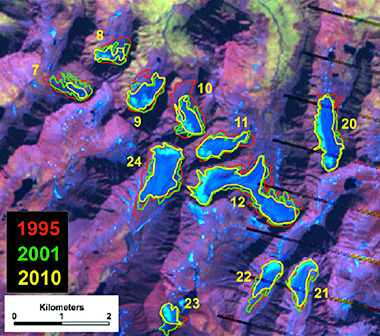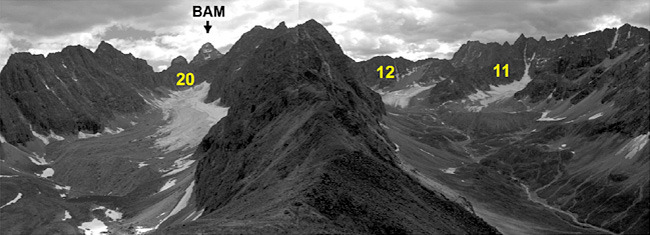Climate Change and Disappearing Glaciers
Climate Change and Disappearing Glaciers

The recession of mountain glaciers around the world has been linked to recent climate change caused by increased greenhouse gas emissions (‘global warming’). Glacier shrinkage is contributing to sea level rise, impacting on regional water resource use, and has also been linked to increased risk of hazards (glacial lake outbursts and landslides). Small glaciers (e.g. < km2) are thought to be particularly vulnerable, with reports of their disappearance from several regions. However, the response of small glaciers to climate change can be modulated by non-climatic factors (such as topographic shading and shielding from debris on their surfaces), and there remain a number of regions where their recent change has evaded scrutiny. This project will use satellite imagery to map historical changes in small glaciers in the southern Coast Mountains, British Columbia, Canada (Figure 1), followed by a fieldwork to ‘ground-truth’ the observed changes and investigate processes leading to their ultimate demise.


The student will benefit from ‘hands-on’ training in a range of industry-standard remote sensing and Geographical Information Systems (GIS) software for analysing imagery obtained from aerial photographs and a variety of satellite sensors, and potentially including recently declassified spy satellite imagery. These key skills are transferable to a range of scientific problems and environmental management and will enhance the student’s career prospects both inside and outside of academia. The student will also benefit from the project expedition, which will involve visits to several of the glaciers and necessitating field-camps at altitudes above 2000m. Conditions are likely to be challenging, enabling the student to develop their personal attributes in terms of organisation, team-work, tenacity, and leadership skills.

Reference
Stokes, C.R., Shahgedanova, M., Evans, I.S. and Popovnin, V.V. (2013) Accelerated loss of alpine glaciers in the Kodar Mountains, south-eastern Siberia. Global and Planetary Change, 101, 82-96.
